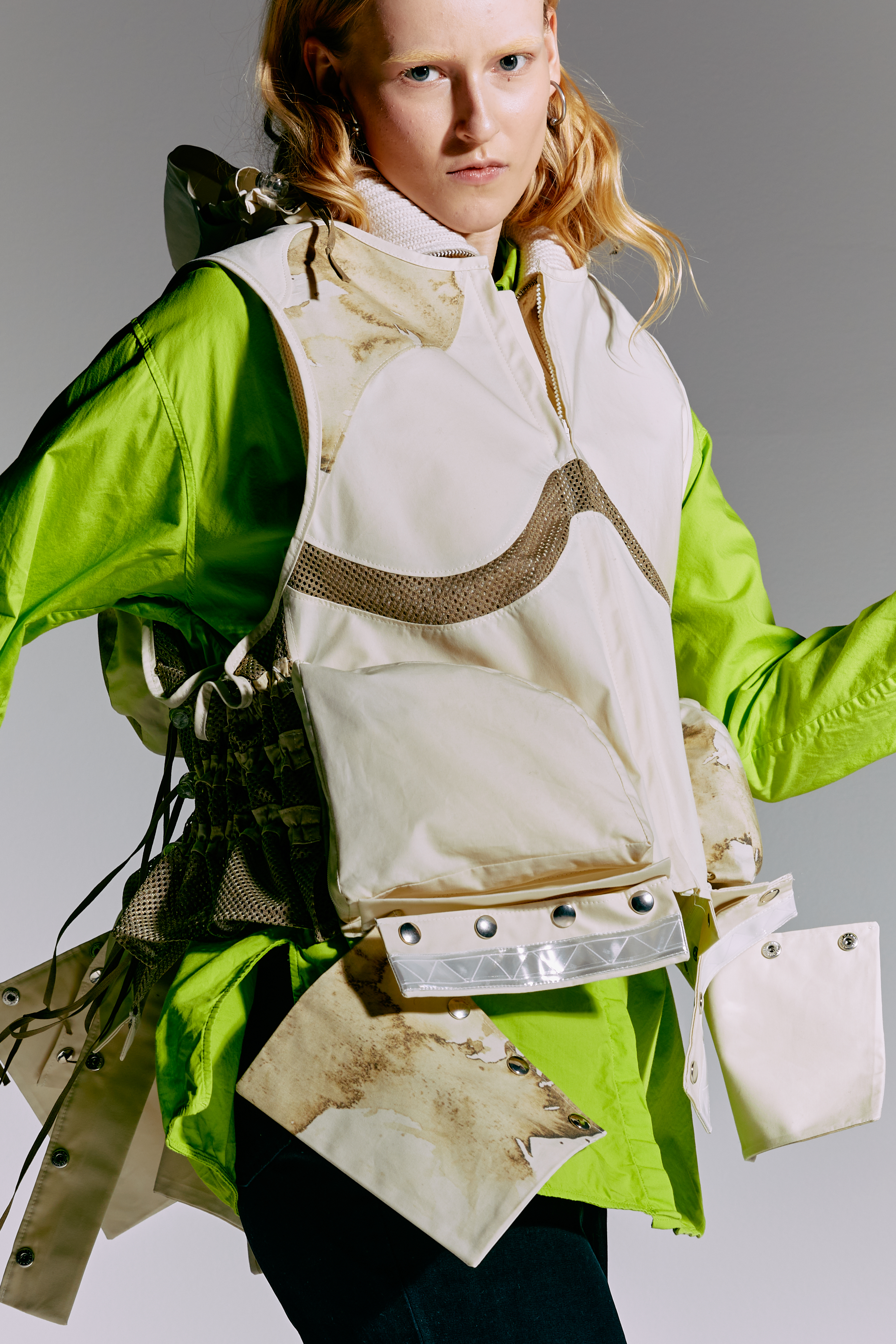
LEARNING OUTCOMES
On successful completion of this course, students will be able to:
- Know the basics of how textile techniques can be applied in smart textile development in the context of prototyping wearables and experimental interactive textiles.
- Conduct an ideation process and concept generation leading towards the creation of wearable prototypes or functional wear prototypes.
- Know the basics of using Arduino and sensor technologies in design projects.
- Consider the qualities of different textile materials and details in functional clothing and wearables design.
- Conduct an open-ended personal or small team design project that involves background research, planning, design, and implementation.
Credits: 12
Schedule: 04.09.2023 - 19.10.2023
Teacher in charge (valid for whole curriculum period):
Teacher in charge (applies in this implementation): Antti Salovaara, Ilona Hyötyläinen, Emmi Pouta, Felix Epp
Contact information for the course (applies in this implementation):
CEFR level (valid for whole curriculum period):
Language of instruction and studies (applies in this implementation):
Teaching language: English. Languages of study attainment: English
CONTENT, ASSESSMENT AND WORKLOAD
Content
valid for whole curriculum period:
Wearable technology and functional wear course invites students to explore tactile ways of interacting with technology through the soft materials and innovating new functional wear solutions. The course encourages open-minded concept development in functional wear or wearable design through experimental material exploration.
First part of the course consists of initial learning period with lectures, hands-on work and background research leading to ideation. After the first part students can choose either functional wear or wearable path. The functional path focuses on user needs, ergonomics, technical and performance requirements, and either material development or clothing or assessor design. The wearable path also focuses on user needs after which it continues with integration of electronics and multimodal interactions in clothing.
In the second part, the students will create a design concept based on the first part. Students who have chosen the wearable path will work in multidisciplinary teams. Students working with functional wear can work individually or in pairs.
Assessment Methods and Criteria
valid for whole curriculum period:
80% attendance and completed assignments and final project. Attendance in the introduction is mandatory.
The work will be evaluated by the following criteria: Activity during the course, concept and originality, use of technology, functionality and user perspective, aesthetics and form, critical thinking.
Workload
valid for whole curriculum period:
12 cr = 324 h total workload. Minimum 80% attendance in contact teaching is required.
95 h Lectures and other contact teaching
188 h Independent work
40 h Own reflection
1 h Course evaluation
DETAILS
Substitutes for Courses
valid for whole curriculum period:
Prerequisites
valid for whole curriculum period:
FURTHER INFORMATION
Further Information
valid for whole curriculum period:
Teaching Language : English
Teaching Period : 2022-2023 Autumn I
2023-2024 Autumn IEnrollment :
Registration in Sisu. Minimum 5 and maximum 30 students. Priority order: CoID 12, FaCT 12, Media 3, ELEC 3 students.
Priority order to courses is according to the order of priority decided by the Academic committee for School of Arts, Design and Architecture https://www.aalto.fi/en/services/registering-to-courses-and-the-order-of-priority-at-aalto-arts
